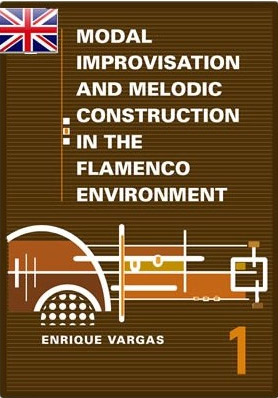Part 1 : The Seven Basic Modes and Their Guitar Fingerings
In this part, the seven Greek modes, their relationship with the mother mode and their six guitar fingerings are presented and explained.
PART 2: Modal Permutations
The concept of symmetrical permutations is essential for melodic construction. In this part, the concept is analysed and explained, and three types of symmetrical permutations, with their corresponding guitar fingerings, are presented for the basic modes. These permutations are perfectly valid for musical instruments other than the guitar; one can play them and just ignore the guitar fingering symbols.
PART 3: Harmonic Aspects of the Basic Modes and Their Application to Accompaniment and Soloing
This part deals with every harmonic aspect of the seven basic modes. First, the structures like triads, seventh, ninth and add chords are explained. The concept of primary vs. secondary chords is also introduced. Circular harmonic relationships based on seconds, thirds and fifths are analyzed, and each basic mode is harmonised with different chord types, with various exemples of modal progressions being introduced and analysed. The concept of the arpeggio is introduced and explained.
At the end of this part, some basic flamenco add chord structures and melodic examples are offered.
Appendix I
This appendix contains a compilation of triads, seventh, ninths and minor 6th chord arpeggios, each with six guitar fingerings.
Appendix II
This appendix is a compendium of 72 licks, or melodic examples/ideas for improvisation, written in each of the basic modes. These licks are harmonised and each come with complete guitar fingerings. Nevertheless, when the guitar fingering symbols are disregarded, they are perfectly valid for any melodic instrument.
PART 4: The Use of Chromaticisms in the Basic Modes and Arpeggios
In this part the author presents two types of melodic chromaticisms, which are passing and leading tones. The concept of “target note” is explained and analyzed. Subsequently, various chromaticisms are inserted into the basic modes, as well as different types of arpeggios.
Appendix I
This appendix is a compendium of 72 licks, or melodic examples/ideas for improvisation, written in each of the basic modes. These licks contain all of the different types of chromaticisms. Each melodic example is harmonized and includes complete guitar fingerings. Nevertheless, when the fingering symbols are disregarded, the material is perfectly valid for any melodic instrument.
Each lick is recorded with harmonic accompaniment and bass, and can be listened to at AudioLicks


